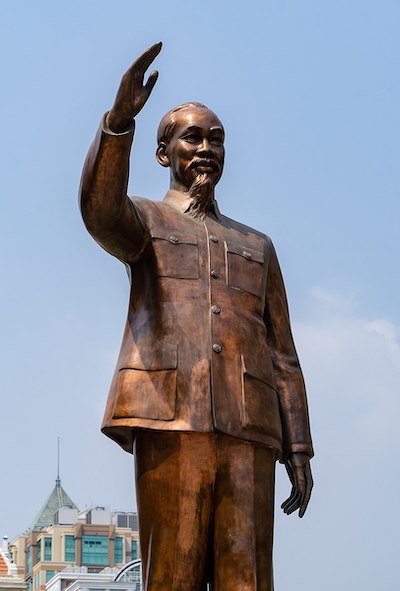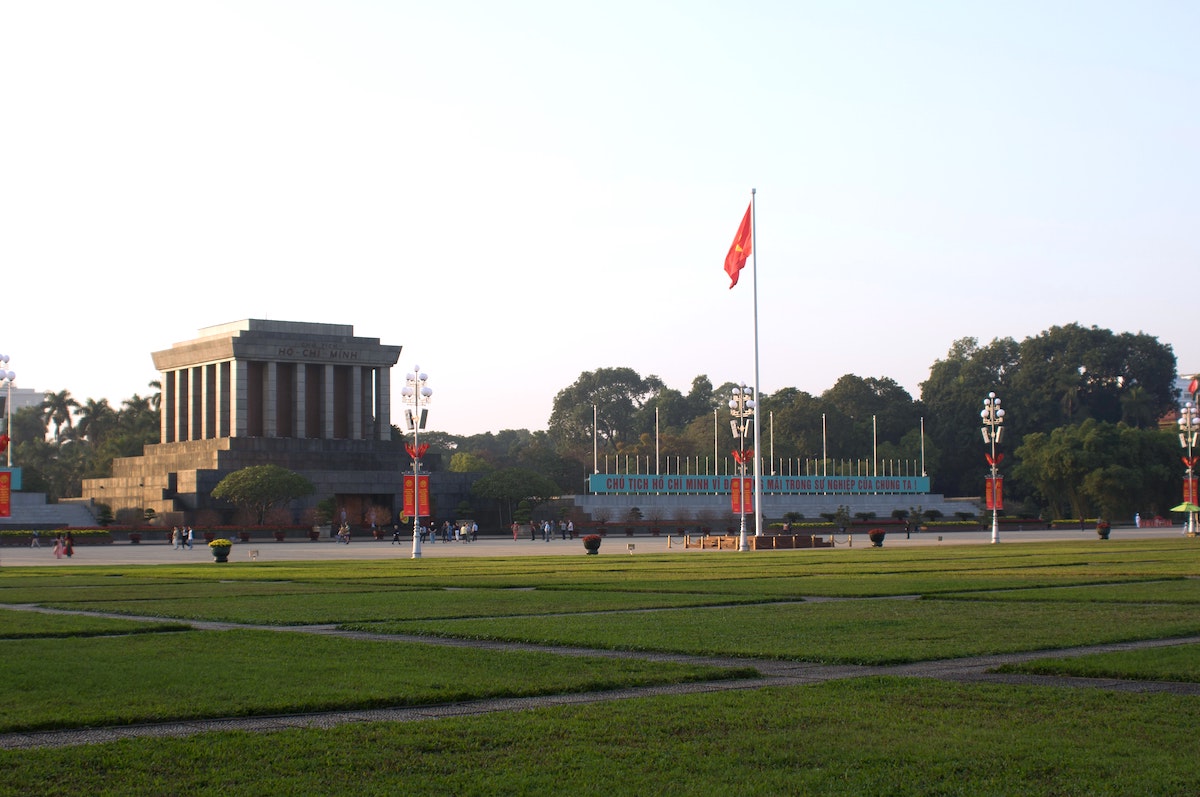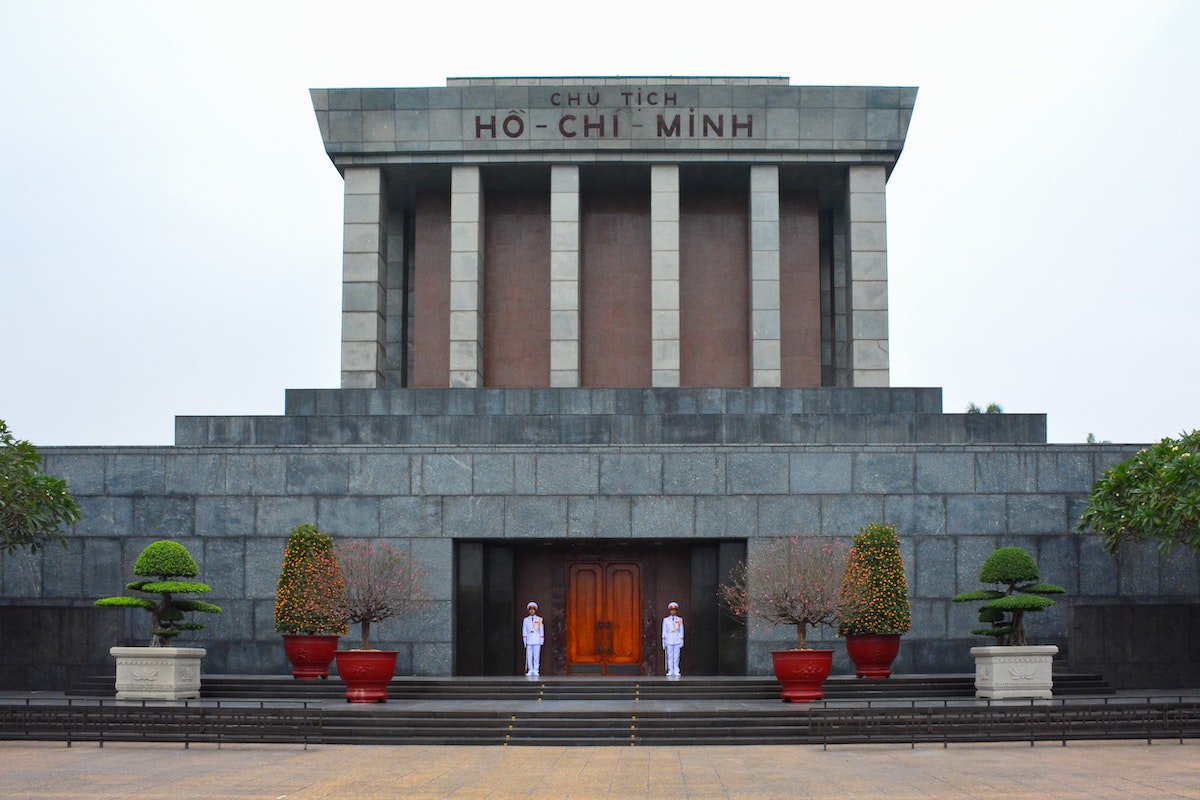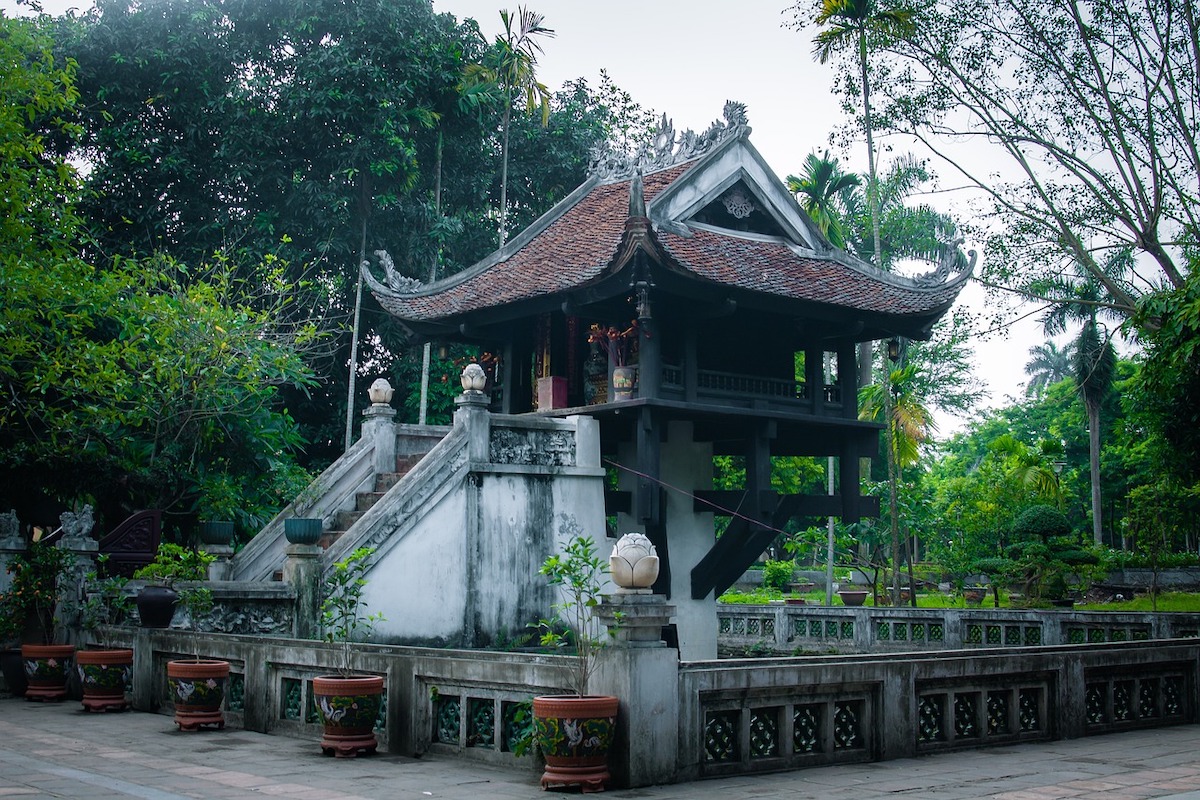By: Sarah Stone
Skip to...
In the heart of Vietnam’s capital city of Hanoi lies a site that captures the essence of a nation’s turbulent past and unwavering spirit: Ho Chi Minh’s Mausoleum. Dedicated to the memory of the country’s revered leader and founding father, this edifice is a reminder of Vietnam’s journey toward independence and unity.
Not only is Ho Chi Minh’s Mausoleum a symbol of national pride; it also offers visitors a unique opportunity to learn about Vietnam’s cultural and political heritage. Surrounded by gardens and historical landmarks, the mausoleum complex invites you to retrace the footsteps of a man who played a pivotal role in shaping the destiny of his people.
Ho Chi Minh: A Visionary Leader and the Father of Modern Vietnam

Image by Steffen Schmitz on Wikimedia Commons
Born Nguyen Sinh Cung in 1890 in a small village in central Vietnam, Ho Chi Minh would become one of the most influential figures in his country’s history. He dedicated his life to pursuing national independence, unity, and establishing a socialist state.
From a young age, Ho Chi Minh demonstrated strong patriotism and a deep curiosity about the world. His early years were marked by travels to France, the United States, and the United Kingdom, where he learned about the effects of colonialism and imperialism on oppressed nations. These experiences fueled his desire to bring about change in his homeland, leading him to join nationalist and communist movements throughout his life.
In 1941, Ho Chi Minh founded the Viet Minh, a revolutionary organization that aimed to liberate Vietnam from French colonial rule. In 1945, Ho Chi Minh declared Vietnam’s independence, establishing the Democratic Republic of Vietnam (North Vietnam) with himself as president. However, this was only the beginning of his fight for a united Vietnam, as the country became embroiled in a decades-long conflict with the United States.
Despite his immense challenges, Ho Chi Minh remained committed to his people and vision of a free and prosperous nation. His leadership and unwavering spirit inspired a generation of Vietnamese to rise against foreign domination, ultimately leading to the end of the Vietnam War in 1975, and the reunification of the north and south parts of the country in 1976.
Today, Ho Chi Minh is revered as a national hero and a symbol of resilience, determination, and unity. His impact on Vietnam’s history and identity remains in the hearts and minds of its people, and his legacy continues to shape the nation’s path toward a brighter future.
The Design and Construction of Ho Chi Minh’s Mausoleum

Photo by Thuỷ Nguyễn on Unsplash
Completed in 1975, Ho Chi Minh’s Mausoleum is a remarkable example of architecture that blends Vietnam’s cultural heritage with influences from iconic mausoleums worldwide. The mausoleum’s design resulted from a collaborative effort by Vietnamese architects, who researched a variety of architectural styles and drew inspiration from structures such as Lenin’s Mausoleum in Moscow.
The imposing granite structure, composed of massive blocks sourced from different regions of Vietnam, inspires strength and permanence. Adorned with traditional Vietnamese motifs and inscriptions, the mausoleum is a tribute to a leader who dedicated his life to national independence and unity. The words “Chủ tịch Hồ Chí Minh” (President Ho Chi Minh) are prominently engraved on the façade.
Ho Chi Minh’s Mausoleum incorporates a blend of architectural elements, with its distinctive three-tiered roof and cube-shaped body—a modern interpretation of traditional Vietnamese temples. The mausoleum’s interior is equally impressive, with a solemn, dimly-lit central hall where Ho Chi Minh’s embalmed body lies in repose. The hall is adorned with polished black granite and national emblems.
Visiting the Mausoleum and Ho Chi Minh’s Embalmed Body
The central hall of Ho Chi Minh’s Mausoleum houses the embalmed body of Ho Chi Minh, preserved in a glass sarcophagus under dim lighting. The body is protected by an honor guard—a team of soldiers who stand watch over the leader’s eternal resting place.
Visiting Ho Chi Minh’s Mausoleum is a venerable experience, and observing this site’s strict etiquette is essential. Ensure you dress modestly, with shoulders and knees covered. Maintain silence and avoid any disruptive behavior, including taking photos.
The Presidential Palace Historical Site and One Pillar Pagoda

Photo by Sandip Roy on Unsplash
As you traverse the mausoleum complex, you’ll see the Presidential Palace Historical Site, an example of French colonial architecture that once served as the official residence of the French Governor-General of Indochina. This bright yellow building, surrounded by manicured gardens, gives a glimpse of the colonial era and the influence of French culture on Vietnam’s history. You can take the opportunity to explore the rooms and halls during your visit.
A short stroll from the Presidential Palace is the One Pillar Pagoda, an iconic symbol of Hanoi. Constructed in 1049 by Emperor Ly Thai Tong, this pagoda is designed to resemble a lotus flower, which is a symbol of purity and enlightenment in Buddhist culture. Sitting atop a single stone pillar, the pagoda creates the illusion of floating on water, offering a serene sanctuary amid the bustling city. The story of the pagoda is interesting as well—according to local folklore, Emperor Ly Thai Tong dreamt of the Goddess of Mercy, who handed him a baby boy while seated on a lotus flower. The emperor, who had no heir, interpreted the dream as a divine message and built the pagoda to honor the goddess. Soon after, he married a peasant girl who bore him a son, cementing the pagoda’s significance in Vietnamese history.
Exploring More of Hanoi
Ho Chi Minh’s Mausoleum is a must-visit for your journey through Hanoi and beyond. As you delve deeper into the city, you’ll uncover tons of historical sites, vibrant street life, and fantastic foods—with its blend of ancient traditions and modern energy, Hanoi promises an unforgettable adventure.
Want to read more about traveling throughout Vietnam? Have a look at these other articles from the Frayed Passport team and community!
About the Author
 As the editor-in-chief of Frayed Passport, my goal is to help you build a lifestyle that lets you travel the world whenever you want and however long you want, and not worry about where your next paycheck will come from. I've been to 20+ countries and five continents, lived for years as a full-time digital nomad, and have worked completely remotely since 2015. If you would like to share your story with our community, or partner with Frayed Passport, get in touch with me at sarah@frayedpassport.com!
As the editor-in-chief of Frayed Passport, my goal is to help you build a lifestyle that lets you travel the world whenever you want and however long you want, and not worry about where your next paycheck will come from. I've been to 20+ countries and five continents, lived for years as a full-time digital nomad, and have worked completely remotely since 2015. If you would like to share your story with our community, or partner with Frayed Passport, get in touch with me at sarah@frayedpassport.com!
Featured image by Hans-Jürgen Weinhardt on Unsplash


